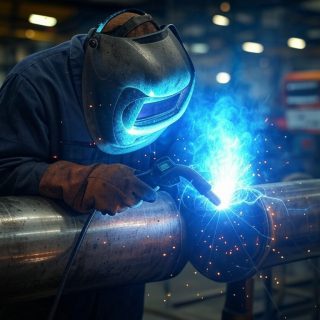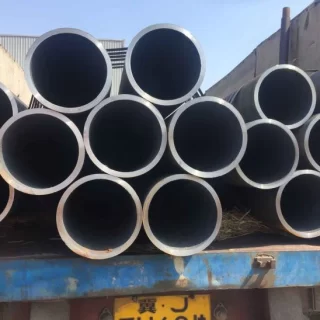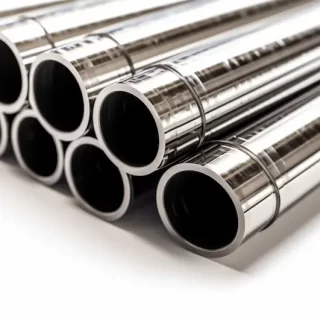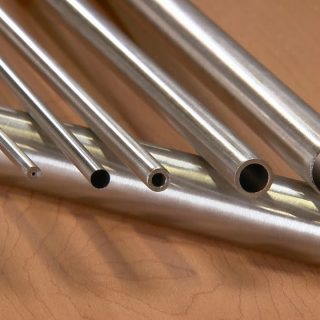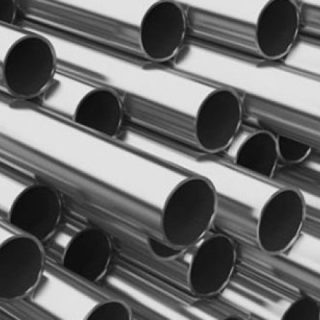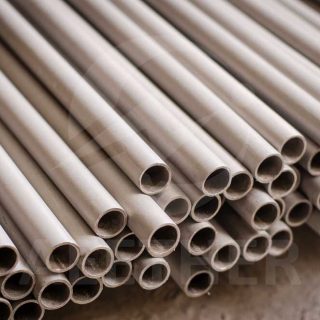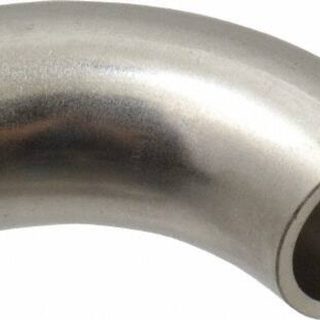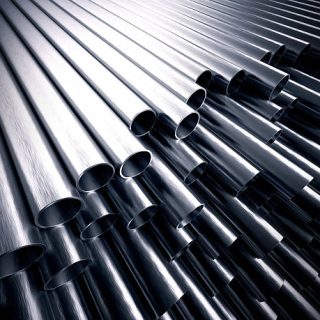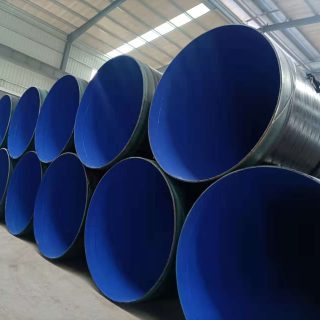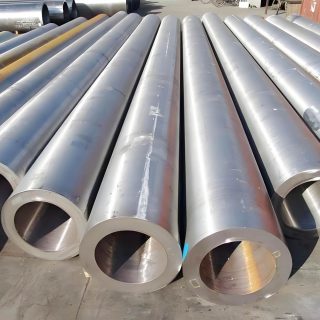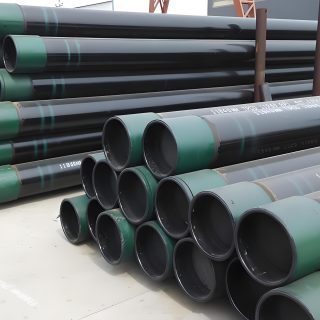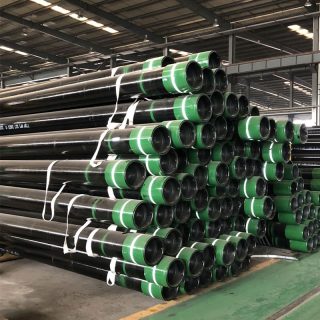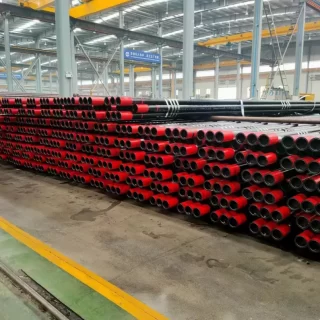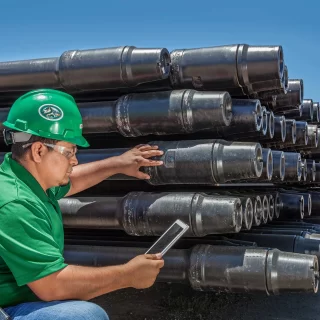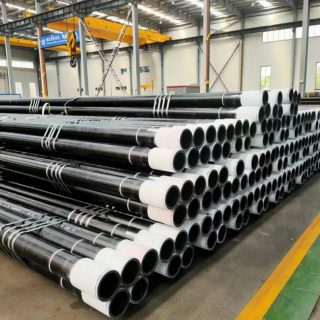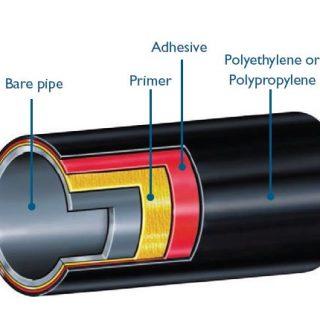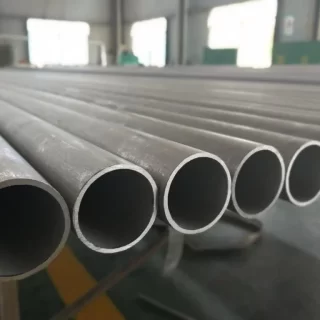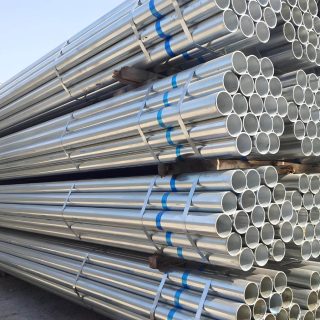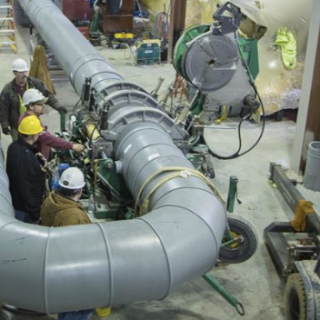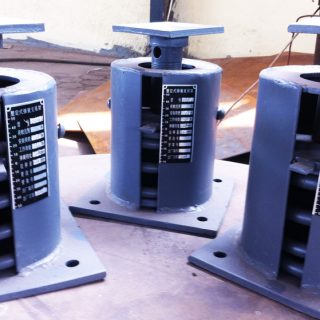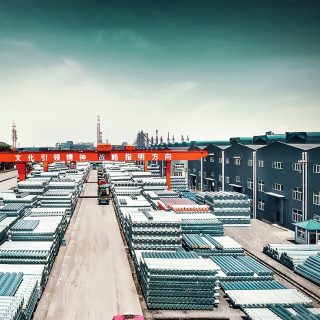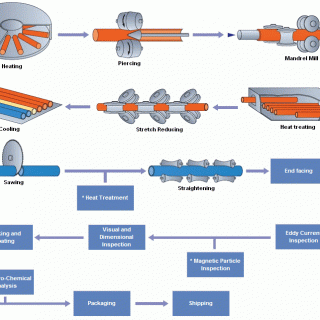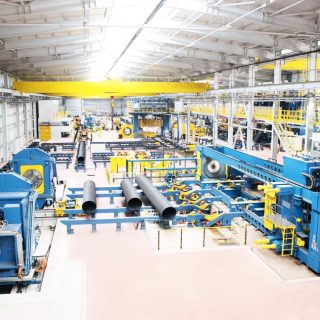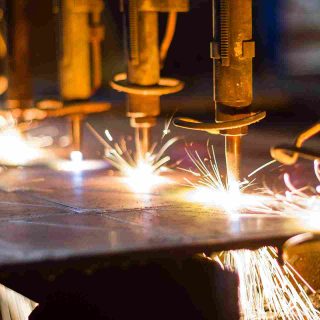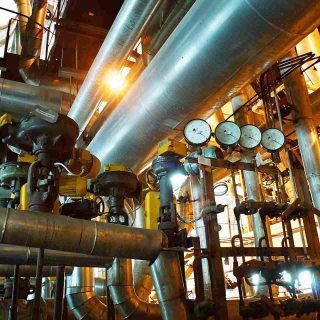เทคโนโลยี
ท่อเหล็กที่มีผนังหนาขนาดใหญ่, ผลิตผ่านกระบวนการขั้นสูงเช่นการเจาะร้อนและการบำบัดความร้อน, เสนอความแข็งแกร่งและความน่าเชื่อถือที่ยอดเยี่ยม. เกรดระหว่างประเทศจาก EN (เช่น, 34CrMo4) และ ASTM (เช่น, A519 4140) ข้างมาตรฐาน GB ตอบสนองความต้องการที่หลากหลาย, จากกระบอกสูบไฮดรอลิกไปจนถึงโครงสร้างพื้นฐานด้านพลังงาน, สร้างความมั่นใจในประสิทธิภาพภายใต้แรงดันสูงและความเครียด.
For high-pressure hydraulic cylinders, seamless steel pipes such as ST52 (E355), แซ่ 4140 (42CrMo), 37มน, and 34CrMo4 are widely used, adhering to standards like DIN 2391, มาตรฐาน ASTM A519, and GB 18248. These grades offer the necessary strength, ความเหนียว, and precision to ensure safety and performance under extreme pressures. Selection depends on specific pressure requirements, สภาพแวดล้อม, and manufacturing processes like honing or heat treatment.
The welding of UNS N08825 pipelines demands a holistic approach integrating material science, process engineering, and stringent quality control. By optimizing TIG/MIG/SMAW parameters, mitigating defects through pre/post-weld treatments, and adhering to international standards, industries can leverage the alloy’s full potential in corrosive and high-temperature environments. Continuous advancements in welding technologies promise enhanced efficiency and reliability for future applications.
Welding Inconel 625 and P22 requires meticulous control of thermal gradients, filler selection, and post-weld treatments to address metallurgical incompatibilities. Industry standards and advanced processes (เช่น, emb, การเชื่อมเลเซอร์) enhance joint reliability in critical applications. Continuous innovation in welding technology will further optimize these dissimilar joints for extreme environments.
Through the welding practice of more than 400 dyne ports in the gasification section of the Liuguo Chemical Ammonia Synthesis Device, it is shown that the above welding process can completely ensure the welding quality. Judging from the result of the passing rate of 96%, it is sufficient. Prove this.
เพื่อสรุป, เทคโนโลยีการรักษาพื้นผิวของนิกเกิล 200 รวมถึงวิธีการเช่นดอง, พื้นผิวการหลอมและขัดเงาที่สดใส. เทคโนโลยีเหล่านี้มีข้อได้เปรียบที่เป็นเอกลักษณ์และพื้นที่สำหรับการปรับปรุงในสถานการณ์แอปพลิเคชันที่แตกต่างกัน.
The choice between Inconel® X-750 (สหรัฐฯ N07750) และโลหะผสมนิกเกิล 600 depends largely on the specific requirements of the application: Choose Inconel X-750 for high-stress, high-temperature applications where mechanical strength, fatigue resistance, and creep resistance are critical (เช่น, การบินและอวกาศ, นิวเคลียร์, and gas turbines). Choose Nickel Alloy 600 for versatile corrosion resistance in general-purpose applications or where fabrication and cost-efficiency are more important (เช่น, การแปรรูปทางเคมี, ทะเล, และเครื่องแลกเปลี่ยนความร้อน).
Hastelloy C-276 stands out as one of the most versatile and corrosion-resistant alloys available today. Its unique properties make it indispensable in industries where performance and reliability are paramount. From resisting aggressive acids in chemical plants to enduring the harsh conditions of marine environments, Hastelloy C-276 has proven its worth time and again. While its high cost and fabrication challenges may pose limitations, the benefits it offers far outweigh these drawbacks for critical applications.As global industries continue to push the boundaries of innovation, Hastelloy C-276 will remain a cornerstone material for demanding environments, สร้างความมั่นใจในความปลอดภัย, ประสิทธิภาพ, and durability for years to come.
The CFD analysis of water flow inside buttweld elbow pipes reveals that the normal-edged elbow pipe outperforms the sharp-edged elbow pipe in terms of flow efficiency, การใช้พลังงาน, และความสมบูรณ์ของโครงสร้าง. การค้นพบที่สำคัญ ได้แก่:
เมื่อเลือกระหว่างท่อโลหะผสมนิกเกิลที่ไร้รอยต่อและรอยเชื่อมสูง, พิจารณาปัจจัยต่าง ๆ เช่นข้อกำหนดความดัน, ความต้านทานการกัดกร่อน, ค่าใช้จ่าย, และขนาดความพร้อมใช้งานเพื่อให้แน่ใจว่าคุณเลือกประเภทท่อที่เหมาะสมสำหรับโครงการของคุณ. สำหรับข้อมูลเพิ่มเติมหรือความช่วยเหลือในการเลือกท่อที่เหมาะสม, ปรึกษากับผู้เชี่ยวชาญด้านวัสดุหรือซัพพลายเออร์ที่สามารถช่วยแนะนำคุณผ่านกระบวนการตัดสินใจ.
Both 3LPP and 3PE coatings provide excellent protection for steel pipelines, but they are designed for different operating conditions. 3LPP coatings, with their high-temperature resistance and superior mechanical strength, are ideal for pipelines in harsh environments or those transporting hot fluids. On the other hand, 3เคลือบพีอี, with their cost-effectiveness and good flexibility, are better suited for pipelines in moderate environments where temperature and mechanical stress are lower.
ข้อต่อเชื่อมในท่อเหล็กโลหะผสม ASTM A335 P5 ไวต่อการกัดกร่อนในรูปแบบต่างๆ, โดยเฉพาะอย่างยิ่งในสภาพแวดล้อมที่รุนแรง. กระบวนการเชื่อม, โซนได้รับผลกระทบจากความร้อน, และการบำบัดความร้อนหลังการเชื่อมล้วนมีบทบาทสำคัญในการพิจารณาพฤติกรรมการกัดกร่อนของวัสดุ. โดยใช้เทคนิคการเชื่อมที่เหมาะสม,
By following these guidelines, operators can effectively manage the integrity of corroded pipes, ensuring continued safe operation in challenging environments.
The casing pipe market is poised for growth and transformation as it adapts to evolving industry demands and technological advancements. While challenges such as raw material price volatility and supply chain disruptions persist, the market’s resilience and innovation capacity offer significant opportunities for growth. As we approach 2025, the focus on sustainability, smart technologies, and advanced materials will shape the future of the casing pipe market, ensuring its continued relevance and contribution to the global energy landscape.
Connection technology for casing pipes is a critical component of well construction, ensuring the safe and efficient operation of oil and gas wells. From traditional threaded and welded connections to advanced mechanical and smart technologies, the industry continues to innovate to meet the demands of increasingly challenging environments. By selecting the appropriate connection technology and adhering to best practices, operators can optimize well performance, enhance safety, and extend the lifespan of their wells.
The phases of drilling, ปลอก, and tubing are integral to the successful development of an oil or gas well. Each phase requires careful planning, precise execution, and adherence to safety and environmental standards. By understanding and effectively managing these phases, operators can optimize production, minimize risks, and ensure the longevity of the well. As technology advances, new techniques and materials continue to enhance the efficiency and safety of these operations, contributing to the ongoing evolution of the oil and gas industry.
Well casing pipe damage poses significant challenges to the integrity and efficiency of wells. Understanding the causes of damage and employing appropriate repair technologies are essential for maintaining safe and effective operations. From corrosion and mechanical stress to seismic activity and abrasive wear, various factors can contribute to casing damage. By utilizing a combination of traditional repair methods and advanced technologies, operators can effectively address these issues and extend the lifespan of their wells. นอกจากนี้, implementing preventive measures and best practices can help minimize the risk of damage and ensure the continued success of well operations. As technology continues to evolve, new solutions and materials will further enhance the ability to prevent and repair well casing pipe damage, contributing to the sustainability and safety of the oil and gas industry.
โดยสรุป, ในขณะที่ทั้งการเคลือบและซับในนั้นจำเป็นสำหรับการปกป้องท่อ, พวกเขามีวัตถุประสงค์ที่แตกต่างและถูกนำไปใช้ในบริบทที่แตกต่างกัน. การเคลือบมุ่งเน้นไปที่การป้องกันภายนอก, การป้องกันท่อจากปัจจัยด้านสิ่งแวดล้อม, ในขณะที่ซับในที่อยู่การป้องกันภายใน, การปกป้องท่อจากสารที่พวกเขาพกพา. ทั้งสองกระบวนการให้ประโยชน์ที่สำคัญ, รวมถึงความต้านทานการกัดกร่อน, เพิ่มประสิทธิภาพการไหล, และยืดอายุการใช้งาน. ในขณะที่เทคโนโลยียังคงก้าวหน้า, ประสิทธิภาพและความยั่งยืนของวิธีการเคลือบและซับในนั้นคาดว่าจะดีขึ้น, สร้างความมั่นใจในความน่าเชื่อถือและความปลอดภัยอย่างต่อเนื่องของระบบท่อในอุตสาหกรรมต่างๆ.
การออกแบบแรงดันการใช้งานสําหรับท่อส่งสารเคมีได้รับอิทธิพลจากการรวมกันของคุณสมบัติทางเคมี, ข้อกําหนดอัตราการไหล, การสูญเสียแรงเสียดทาน, การเลือกใช้วัสดุ, และสภาพแวดล้อม. โดยพิจารณาปัจจัยเหล่านี้อย่างรอบคอบ, วิศวกรสามารถรับประกันการขนส่งสารเคมีได้อย่างปลอดภัยและมีประสิทธิภาพ, ลดความเสี่ยงและรักษาความสมบูรณ์ของท่อส่ง.
เหตุผลหลักอีกประการหนึ่งที่การชุบสังกะสีแบบจุ่มร้อนให้การป้องกันการกัดกร่อนที่ดีกว่าคือการเคลือบจะถูกนำไปใช้ในระหว่างกระบวนการผลิตก่อนที่จะติดตั้งเหล็ก. ซึ่งหมายความว่าพื้นที่ใดๆ ที่ถูกตัดหรือเสียหายระหว่างการติดตั้งจะยังคงมีการเคลือบป้องกันอยู่. วิธีการชุบสังกะสีแบบอื่น, เหมือนการชุบสังกะสีล่วงหน้า, เคลือบเหล็กก่อนตัดและประกอบ. ทำให้พื้นที่ใดๆ ที่ถูกตัดหรือเสียหายระหว่างการติดตั้งเสี่ยงต่อการเกิดสนิมและการกัดกร่อน.
ข้อกำหนดมาตรฐานสากลของ ASTM สำหรับท่อเหล็กแสดงรายการข้อกำหนดมาตรฐานสำหรับท่อหม้อไอน้ำและท่อฮีตเตอร์ซุปเปอร์, ท่อบริการทั่วไป, ท่อเหล็กในการให้บริการโรงกลั่น, ท่อแลกเปลี่ยนความร้อนและคอนเดนเซอร์, ท่อกลและโครงสร้าง.
ประเภท ก- ใช้ในบริเวณที่มีพื้นที่ส่วนหัวเพียงพอ. ระดับความสูงที่เฉพาะเจาะจงเป็นที่พึงปรารถนา. ประเภทบี- ใช้เมื่อเฮดรูมมีจำกัด. สิ่งที่แนบมากับหัวเป็นแบบดึงเดียว. ประเภทซี- ใช้เมื่อเฮดรูมมีจำกัด. สิ่งที่แนบมากับหัวคือการเชื่อมต่อแบบเคียงข้างกัน
ท่อเหล็กคาร์บอนมีความทนทานต่อการกระแทกและการสั่นสะเทือนสูง จึงเหมาะสำหรับการลำเลียงน้ำ, น้ำมัน & ก๊าซและของเหลวอื่น ๆ ใต้ถนน. Dimensions Size: 1/8″ ถึง 48″ / DN6 to DN1200 Thickness: ช 20, โรคติดต่อทางเพศสัมพันธ์, 40, เอ็กซ์เอส, 80, 120, 160, XXS Type: Seamless or welded pipe Surface: ไพรเมอร์, น้ำมันป้องกันสนิม, เอฟบีอี, 2วิชาพลศึกษา, 3LPE Coated Material: มาตรฐาน ASTM A106B, A53, API 5L B, X42, X46, X52, X56, X60, X65, X70 Service: การตัด, บาก, การทำเกลียว, งานเซาะร่อง, การเคลือบผิว, การชุบสังกะสี
ท่อไร้ตะเข็บผลิตขึ้นโดยใช้กระบวนการเจาะ, โดยที่เหล็กแท่งแข็งถูกให้ความร้อนและเจาะจนกลายเป็นท่อกลวง. ท่อเชื่อม, ในทางกลับกัน, เกิดจากการต่อแผ่นเหล็กหรือขดสองขอบเข้าด้วยกันโดยใช้เทคนิคการเชื่อมแบบต่างๆ.
ที่ 3 elements of pipe dimension Dimension Standards of carbon and stainless steel pipe (ASME B36.10M & B36.19ม) ตารางขนาดท่อ (กำหนดการ 40 & 80 ท่อเหล็กหมายถึง) หมายถึงขนาดท่อที่กำหนด (กรมอุทยานฯ) และเส้นผ่านศูนย์กลางที่กำหนด (ดีเอ็น) แผนภูมิขนาดท่อเหล็ก (ตารางขนาด) ตารางคลาสน้ำหนักท่อ (WGT)
ท่อไร้รอยต่อผลิตขึ้นโดยการอัดขึ้นรูปโลหะตามความยาวที่ต้องการ; ดังนั้นท่อ ERW จึงมีรอยเชื่อมในหน้าตัด, ในขณะที่ท่อไร้ตะเข็บไม่มีรอยต่อในหน้าตัดตลอดความยาว. ในท่อไร้รอยต่อ, ไม่มีการเชื่อมหรือข้อต่อ และผลิตจากเหล็กแท่งกลมตัน.
ท่อ ERW สีดำ. ความต้านทานไฟฟ้าเชื่อม (ERW) ท่อผลิตจากเหล็กแผ่นรีดร้อน / กรีด. คอยล์ที่เข้ามาทั้งหมดได้รับการตรวจสอบตามใบรับรองการทดสอบที่ได้รับจากโรงงานถลุงเหล็กในด้านคุณสมบัติทางเคมีและทางกล. ท่อ ERW ขึ้นรูปเย็นเป็นรูปทรงกระบอก, ไม่เกิดความร้อน.



